Your cart is currently empty!
Search results for: “74”
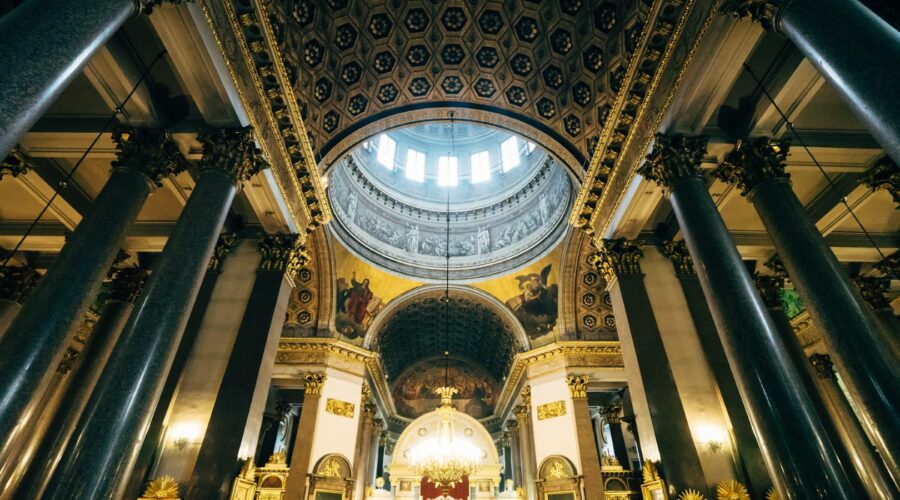
Discover the Metropolitan Community Church: A Welcoming Embrace for the LGBTQ+ Community
Introduction
The Metropolitan Community Church (MCC) is a global network of churches that have been at the forefront of LGBTQ+ advocacy and inclusivity since its inception in 1968. With a mission of radical inclusivity and unconditional love, MCCs have provided a safe and affirming space for individuals of all sexual orientations and gender identities to find community, support, and spiritual growth.
History and Origins
Founded by Reverend Troy Perry in Los Angeles, California, the MCC emerged as a response to the alienation and discrimination experienced by LGBTQ+ individuals within the traditional church. Perry, himself a gay man, sought to create a space where people could openly express their faith and sexuality without fear of judgment or exclusion.
Core Values and Beliefs
At the heart of the MCC’s mission lie its core values:
- Radical Inclusivity: MCCs welcome and affirm all people, regardless of their sexual orientation, gender identity, race, ethnicity, age, or socioeconomic status.
- Unconditional Love: MCCs believe that every person deserves to be loved and accepted unconditionally, especially those marginalized by society.
- Spiritual Empowerment: MCCs prioritize fostering a sense of spiritual growth and connection for all members, empowering them to live authentic and fulfilling lives.
Community and Worship
MCCs are vibrant communities that offer a wide range of programs and activities for members. These include:
- Weekly worship services that uplift and empower LGBTQ+ individuals
- Small groups such as Bible studies and support groups
- Social events and outings that foster a sense of connection and belonging
- Activism and advocacy efforts that promote LGBTQ+ equality and justice
Global Network
The MCC is a global network with churches in over 20 countries around the world. This network provides a sense of unity and support for LGBTQ+ individuals across borders, fostering a sense of belonging to a global community.
Challenges and Controversies
Despite its commitment to inclusivity, the MCC has faced challenges and controversies over the years:
Schisms and Divergence
The MCC has experienced several schisms and divergence over time, leading to the creation of breakaway denominations and organizations. These divisions have sometimes been rooted in differing interpretations of the MCC’s mission and beliefs.
Persecution and Discrimination
MCCs have faced persecution and discrimination from both within the wider church and society at large. This has included physical violence, vandalism, and efforts to deny MCCs recognition or legal protections.
Conclusion
The Metropolitan Community Church has played a vital role in the LGBTQ+ rights movement, providing a sanctuary and a voice for individuals marginalized by traditional religious institutions. With its unwavering commitment to radical inclusivity, unconditional love, and spiritual empowerment, the MCC continues to be a beacon of hope and support for the LGBTQ+ community worldwide.
Additional Resources
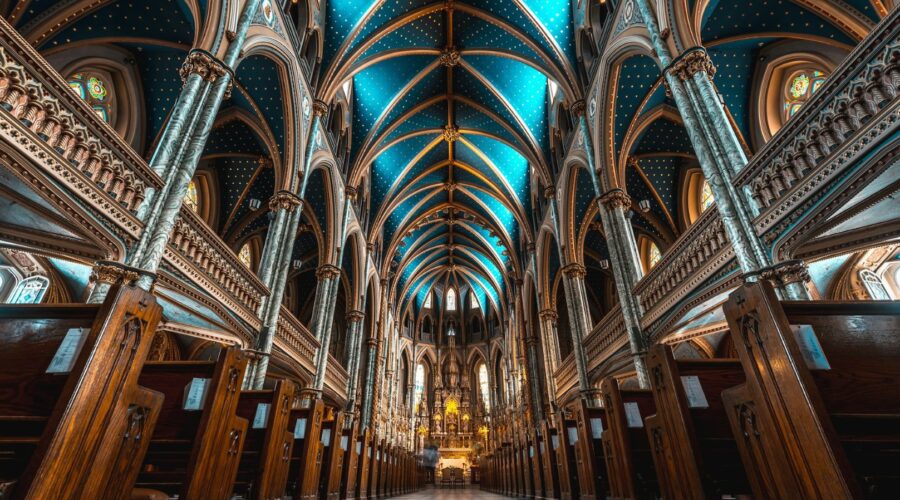
Discover the Splendors of the Sacred Heart Church: A Comprehensive Guide
A Beacon of Faith and Architectural Marvel
Nestled amidst the vibrant tapestry of Barcelona, Spain, the Sacred Heart Church stands as a testament to the grandeur of Gothic Revival architecture. Conceived by the renowned architect Antoni Gaudí, this awe-inspiring basilica is a culmination of his visionary artistry and a profound symbol of faith.
Historical Context
The inception of the Sacred Heart Church can be traced back to 1874, when the Josep Maria Bocabella, a fervent Catholic, purchased a plot of land on the outskirts of Barcelona with the intention of erecting a temple dedicated to the Sacred Heart of Jesus. Gaudí was entrusted with the architectural design in 1883, embarking on a project that would span four decades and become one of his most enduring masterpieces.
Architectural Prowess
The Sacred Heart Church is a symphony of architectural brilliance, showcasing Gaudí’s signature style that seamlessly blends Gothic, Art Nouveau, and Modernista elements. The majestic façade is adorned with intricate carvings, vibrant mosaics, and soaring spires, creating an ethereal presence that captivates all who behold it.
Façade
The façade of the Sacred Heart Church is divided into three distinct sections, each representing a stage in the life of Christ. The lower section, known as the Nativity Façade, depicts the birth and early life of Jesus. The central section, the Passion Façade, portrays scenes from his crucifixion, death, and resurrection. The upper section, the Glory Façade, celebrates the ascension of Christ and the triumph of the Catholic Church.
Towers and Spires
The Sacred Heart Church boasts a total of eighteen towers and spires, each meticulously designed to convey a specific religious symbolism. The central tower, known as the Tower of Jesus Christ, reaches a height of 170 meters and is adorned with a gilded statue of Christ holding a cross. The twelve apostles are represented by the remaining towers, while the four evangelists are symbolized by the pinnacles on each corner of the church.
Interior
The interior of the Sacred Heart Church is a testament to Gaudí’s genius for creating spaces that inspire both awe and introspection. The nave is a vast and soaring space, supported by slender columns that resemble trees, creating a serene and otherworldly atmosphere. The stained-glass windows, designed by Joan Vila-Grau and crafted by Josep Maria Jujol, bathe the interior in a kaleidoscope of colors.
Crypt
Beneath the main altar of the Sacred Heart Church lies the crypt, where the remains of Antoni Gaudí rest. The crypt is a somber and reflective space, adorned with sculptures and mosaics that pay homage to the architect’s life and work.
Symbolism and Inspiration
The Sacred Heart Church is a profound manifestation of Gaudí’s faith and his unwavering belief in the power of architecture to uplift and inspire. The basilica is replete with religious symbolism, from the intricate carvings depicting biblical scenes to the ingenious use of light and color.
The Sacred Heart of Jesus
The central theme of the Sacred Heart Church is the devotion to the Sacred Heart of Jesus, a symbol of divine love and compassion. The basilica is dedicated to the worship and veneration of this sacred symbol, and many of its architectural elements are designed to evoke the heart of Christ.
Light and Color
Gaudí masterfully employed light and color to create an immersive and awe-inspiring experience within the Sacred Heart Church. The stained-glass windows, mosaics, and painted ceilings emit a symphony of colors that shift and dance with the changing light throughout the day. This play of light and color is intended to symbolize the divine presence and the transformative power of faith.
Nature and Symbolism
Gaudí’s profound love for nature is evident throughout the Sacred Heart Church. The columns resemble trees, the stained-glass windows evoke the colors of flowers, and the mosaics depict scenes from the natural world. This integration of nature into the church’s design serves as a reminder of the interconnectedness of all living things and the sacredness of creation.
Visiting the Sacred Heart Church
The Sacred Heart Church is a must-see destination for visitors to Barcelona. Here are some tips for planning your visit:
* Book Tickets in Advance: Due to its immense popularity, it is highly recommended to book tickets online in advance to secure your preferred visiting time.
* Guided Tours: Guided tours are available in multiple languages and provide an in-depth exploration of the church’s history, architecture, and symbolism.
* Appropriate Attire: As a place of worship, it is customary to dress respectfully when visiting the Sacred Heart Church. Revealing or casual clothing is discouraged.
* Photography: Photography is generally permitted within the church, but it is important to be mindful of other visitors and to avoid using flash.
* Accessibility: The Sacred Heart Church is accessible to visitors with disabilities. Wheelchair ramps and elevators are available throughout the building.Conclusion
The Sacred Heart Church is a masterpiece of modern architecture, a symbol of faith, and a testament to the boundless creativity of Antoni Gaudí. Its grandeur, symbolism, and spiritual significance continue to captivate and inspire visitors from around the globe. Whether you are a devout Catholic, an architecture enthusiast, or simply a traveler seeking a truly awe-inspiring experience, the Sacred Heart Church is an unforgettable destination that will leave an enduring impression on your heart and soul.
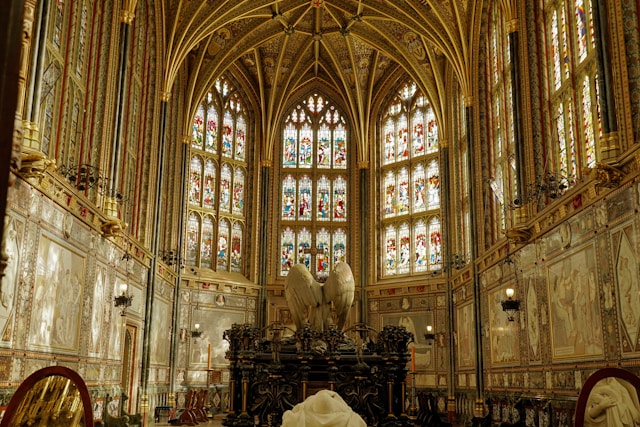
Village Church Pastor Matt Chandler: A Comprehensive Guide
Who is Matt Chandler?
Matt Chandler is the lead pastor of The Village Church, a multi-site evangelical megachurch based in Flower Mound, Texas. He is known for his charismatic preaching style, biblical teaching, and emphasis on discipleship.
Early Life and Ministry
Chandler was born in Spokane, Washington, in 1974. He graduated from Liberty University in 1996 and Dallas Theological Seminary in 2002. After graduating, he became the youth pastor at Highland Park Presbyterian Church in Dallas.
In 2002, Chandler planted The Village Church with a small group of people in Highland Village, Texas. The church quickly grew and expanded to multiple campuses in the Dallas-Fort Worth area.
Theology and Teaching
Chandler’s theology is rooted in the Bible, particularly the Gospel of Jesus Christ. He emphasizes the importance of salvation through faith in Christ, the power of God’s grace, and the transformative role of the Holy Spirit.
Chandler’s preaching style is characterized by its clarity, humor, and personal stories. He uses a variety of illustrations and anecdotes to make complex theological concepts accessible to his audience.
Discipleship and Community
Chandler is passionate about discipleship and helping people grow in their faith. He believes that true discipleship is not just about head knowledge but about heart transformation.
The Village Church offers a variety of discipleship programs, including small groups, classes, and mentoring relationships. The church also emphasizes the importance of community and relationships, and encourages members to connect with one another.
Leadership and Influence
Chandler is a respected leader in the evangelical community. He has written several books, including “To Live Is Christ,” “Creature of the Word,” and “The Explicit Gospel.” He also hosts a popular podcast called “The Matt Chandler Show.”
Chandler’s influence extends beyond The Village Church. He is a sought-after speaker at conferences and events around the world. He has also been featured in numerous media outlets, including The New York Times, Christianity Today, and The Gospel Coalition.
Controversies and Critiques
Like many prominent Christian leaders, Chandler has not been without his share of controversies and critiques.
- Calvinism: Chandler holds a Calvinist theological perspective, which emphasizes God’s sovereignty and election. This has led to some criticism from those who believe that Calvinism is too deterministic.
- Social Issues: Chandler has expressed conservative views on social issues such as abortion and homosexuality. This has led to criticism from those who believe that his views are too narrow-minded.
- Leadership Style: Some have criticized Chandler’s leadership style, which they say is too authoritarian. They argue that he does not allow enough dissent or criticism within his church.
Conclusion
Matt Chandler is a complex and influential figure in the evangelical Christian community. He is a gifted preacher, a passionate disciple-maker, and a respected leader. While he has faced some controversies and critiques, his impact on countless lives has been undeniable.
Whether you agree with his theology or not, there is no denying that Chandler is a Christian leader who has made a significant contribution to the church and the world.
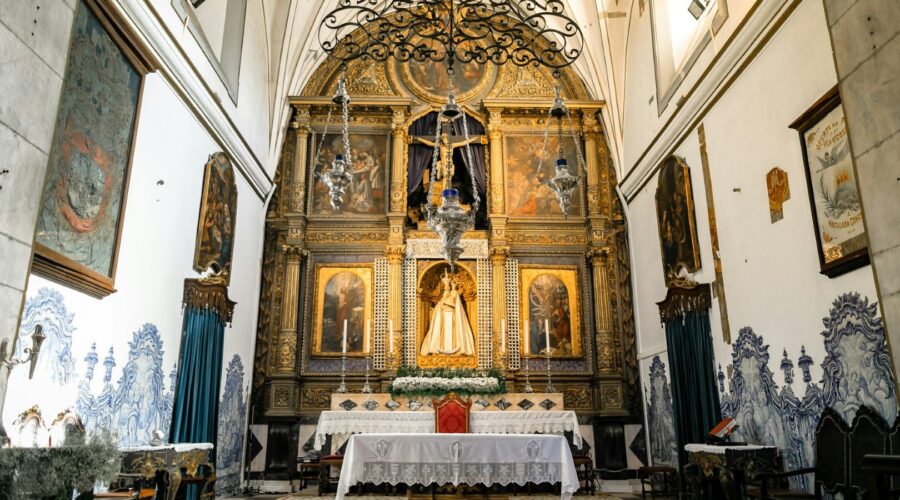
Unlocking the Secrets of Shepherd Church: A Comprehensive Guide
Are you seeking a vibrant and transformative faith community? Shepherd Church offers a welcoming space for individuals from all walks of life. In this comprehensive guide, we will delve into the distinctive aspects of Shepherd Church, exploring its beliefs, mission, and impact.
History and Mission
Founded in 1974 by Pastor Dudley Rutherford, Shepherd Church began as a small gathering in a rented space. Over the years, it has grown into a thriving congregation with multiple campuses in California and a global reach. The church’s mission is to “connect people to God and to one another, helping them grow in their faith and purpose.”
Core Beliefs
Shepherd Church adheres to the following core beliefs:
- The Bible is the authoritative Word of God.
- God is the Creator and Sustainer of all things.
- Jesus Christ is the only begotten Son of God, fully God and fully human.
- Salvation is a free gift from God, received by faith in Jesus Christ.
li>The Holy Spirit convicts, guides, and empowers believers.
Worship Experience
Shepherd Church’s worship services are vibrant and engaging, featuring contemporary music, inspiring sermons, and opportunities for personal reflection and prayer. The church values diversity and welcomes people from all backgrounds to participate in its worship.
Small Groups and Ministries
Small groups are the heart of Shepherd Church’s community. Members gather in smaller settings to study the Bible, pray, and build relationships. The church also offers a wide range of ministries, including:
- Children’s and youth programs
- Marriage and family counseling
- Community outreach programs
- Missions outreach
Leadership and Structure
Shepherd Church is led by a team of pastors and elders who are committed to providing spiritual leadership and oversight. The church uses a congregational model of governance, in which all members have a voice in decision-making.
Global Impact
Shepherd Church has a strong commitment to global missions. The church supports missionaries in over 30 countries, providing resources, training, and prayer support. Shepherd Church also organizes mission trips to various parts of the world.
Membership and Involvement
Becoming a member of Shepherd Church is a simple process that involves attending a membership class and expressing a commitment to the church’s mission. Members are encouraged to get involved in the church’s activities, such as small groups, ministries, and volunteer opportunities.
Benefits of Membership
Membership at Shepherd Church offers several benefits, including:
- Access to small groups and ministries
- Prayer support and counseling
- Opportunities for personal growth and discipleship
- A sense of community and belonging
How to Get Involved
To learn more about Shepherd Church and get involved, visit the church’s website or attend one of its services. You can also contact the church office for more information.
Table of Campus Locations
| Campus | Address | Phone Number |
|—|—|—|
| Downtown Los Angeles | 735 S Figueroa St, Los Angeles, CA 90017 | (213) 488-7400 |
| Santa Monica | 1855 Lincoln Blvd, Santa Monica, CA 90404 | (310) 829-3900 |
| Pasadena | 2834 E Colorado Blvd, Pasadena, CA 91107 | (626) 792-1600 |
| Orange County | 7565 Irvine Center Dr, Irvine, CA 92618 | (714) 955-8000 |Conclusion
Shepherd Church is a vibrant and welcoming faith community that offers a rich and transformative experience. Through its worship services, small groups, ministries, and global impact, the church provides a supportive and inspiring environment for individuals to grow in their faith and purpose. Whether you are seeking a spiritual home or a place to serve others, Shepherd Church has something to offer every seeker.
We invite you to explore all that Shepherd Church has to offer. Visit our website or attend one of our services to learn more about our mission, meet our team, and experience the transformative power of community.
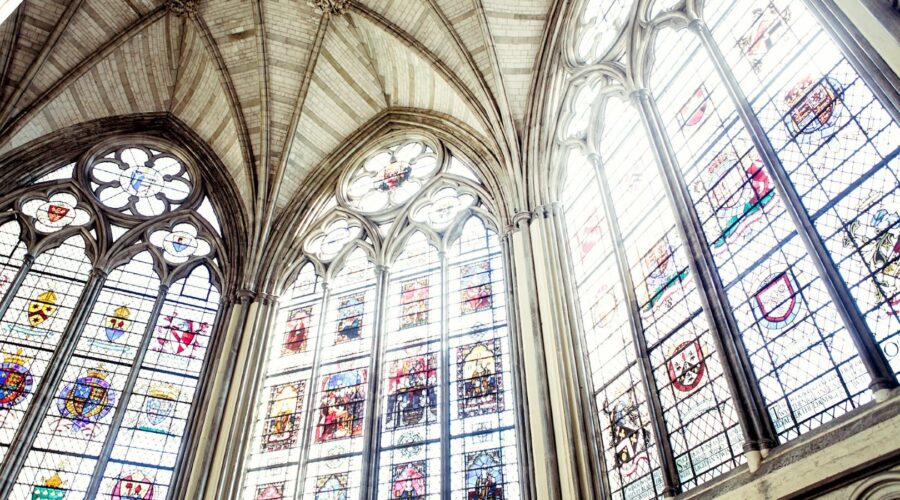
GriefShare: A Comprehensive Guide for Navigating Loss and Healing
Introduction
Grieving the loss of a loved one is an incredibly painful and overwhelming experience. GriefShare is a Christ-centered support group designed to provide a safe and compassionate space where individuals can connect with others who have experienced similar losses and learn practical coping mechanisms.
What is GriefShare?
GriefShare is a non-profit organization that offers a 13-week support group program for individuals grieving the loss of a loved one. The program is led by trained facilitators who have themselves experienced the pain of loss.
Each week, participants gather for a two-hour session that includes:
- Personal sharing and discussion
- Video teaching on a specific topic related to grief
- Small group discussions
- Silent prayer time
Who is GriefShare For?
GriefShare is open to anyone who has lost a loved one, regardless of their age, faith, or circumstances. It is particularly beneficial for individuals who are struggling to cope with their grief or who feel isolated and alone.
The Benefits of GriefShare
Participating in GriefShare can provide numerous benefits for grievers, including:
- Connection with others: GriefShare offers a supportive community where individuals can connect with others who understand what they are going through.
- Validation of emotions: GriefShare provides a safe space where grievers can express their emotions without judgment.
- Practical coping mechanisms: GriefShare teaches practical strategies for managing the challenges of grief.
- Spiritual support: GriefShare incorporates a spiritual component that can provide comfort and strength to those who are seeking it.
- Hope for the future: GriefShare helps grievers begin to envision a future beyond their loss.
How to Find a GriefShare Group
To find a GriefShare group near you, visit the GriefShare website.
Additional Resources
In addition to GriefShare, there are other resources available to help individuals cope with grief, including:
- National Suicide Prevention Lifeline: 1-800-273-8255
- Crisis Text Line: Text “HOME” to 741-741
- The Trevor Project: 1-866-488-7386
Conclusion
Grieving the loss of a loved one is a challenging journey. GriefShare provides a supportive and compassionate environment where grievers can connect with others, learn coping mechanisms, and find hope for the future. If you are struggling with grief, consider joining a GriefShare group near you.

How to Add a Listing
- First, click on the “Add Listing”-link in the top right menu.
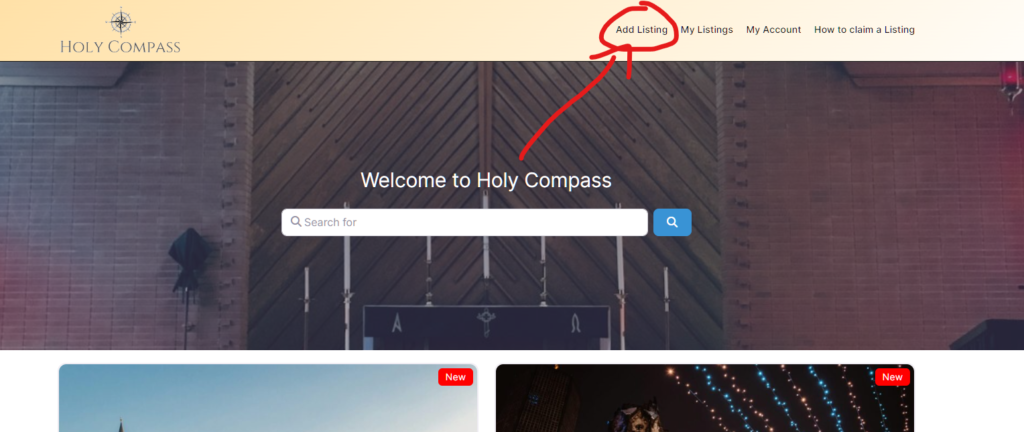
2. Then click on the “Register”-link to create an account.

3. A pop-up will open with the registration form. There you have to fill out a Username, your Email, set a password and click on “Create Account”.


4. After you filled out your details, you will be logged in automatically and redirected to the “add listing”-page.

5. Now you have to enter your listing details.

6. The first option talks about two different packages, you can ignore this field and leave the selection with the “Default Package”.

7. After you filled out the details, of your listing, you can click the “Submit Listing”-button in the end of the page.

8. You will be redirected to the checkout page where you can purchase the listing.

9. After you completed the payment, you will see the order confirmation page. From there, click on the “My Listings”-Menu Button in the top menu.

10. On the “My Listings”-page you will see the listing you just purchased. Click on the blue link of the listing.

11. If you want to edit the listing again, you can click on the “Edit”-button.
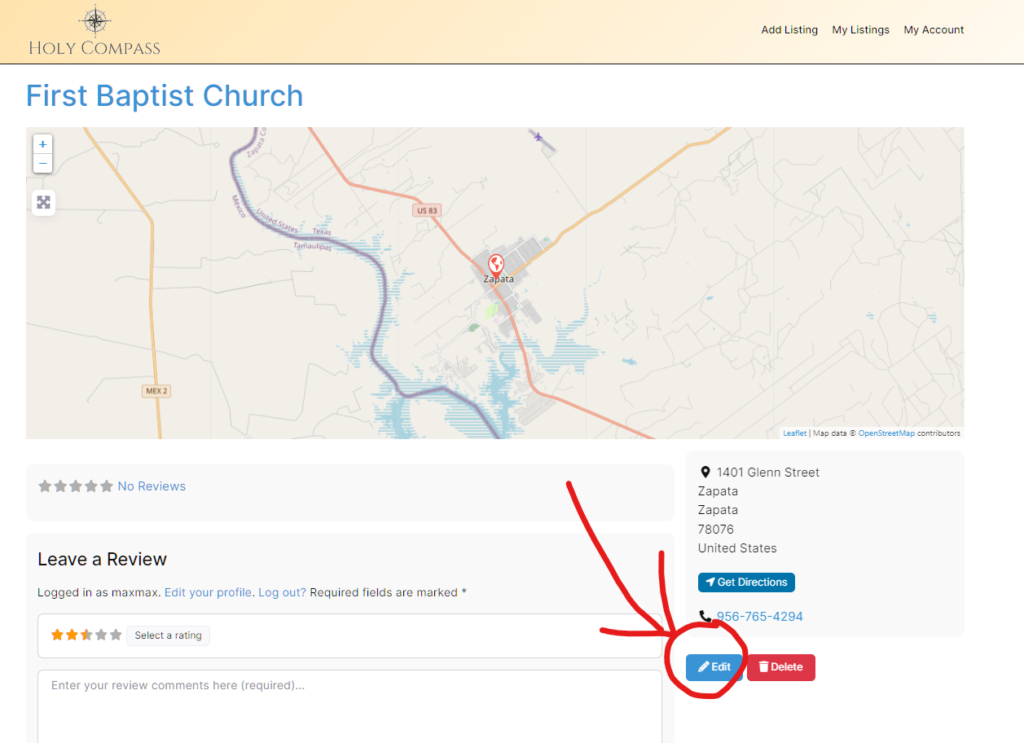
12. Now you can edit the listing and fill out the missing information.
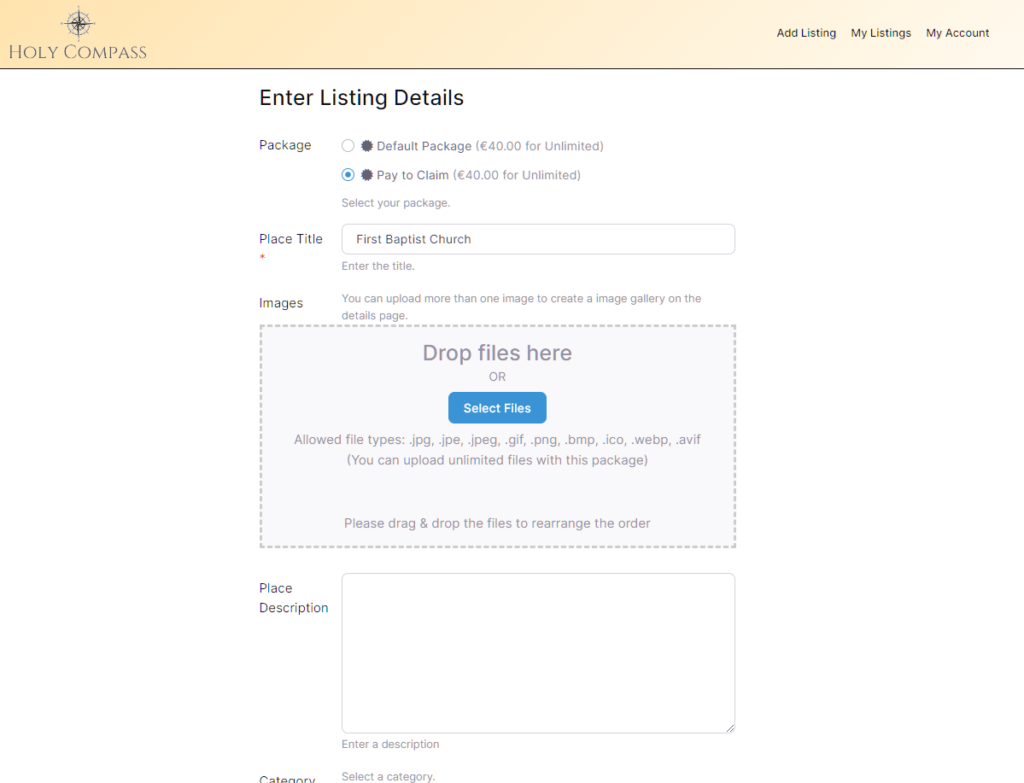
13. After you added your information, you can click on “Submit Listing” in the bottom of the page.

14. Your changes are live immediately, you can click on the blue “here” link to see your listing.

That’s it. If you have questions, please write us an email under: [email protected]

How to Claim a Church
- First, search for the listing you want to claim, you can type in the name of the city or the name of the church. In our example, we are searching for “Chicago”.
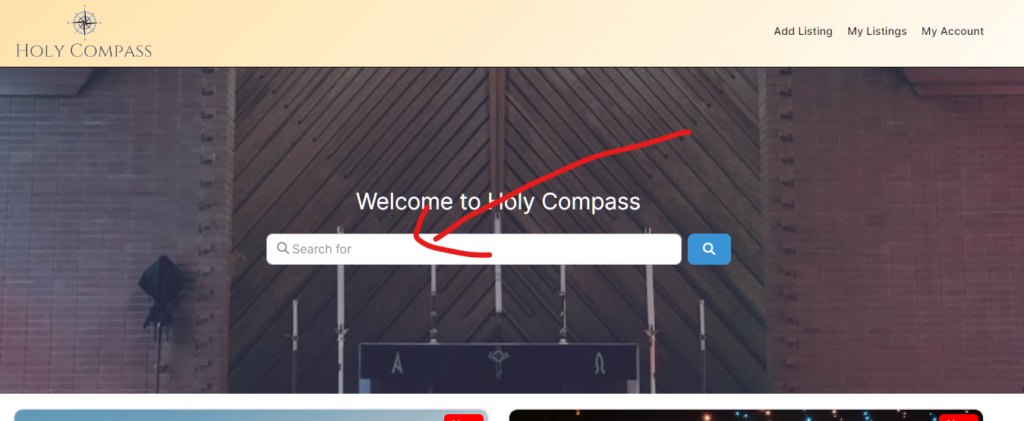
2. You will see a list of all the places of worship that we have registered with the address. Like this you won’t have to manually type in the correct address, you can just select your listing and the title, address and phone number is already there. In our example, we are taking the “Zen Buddhist Temple – Chicago”.
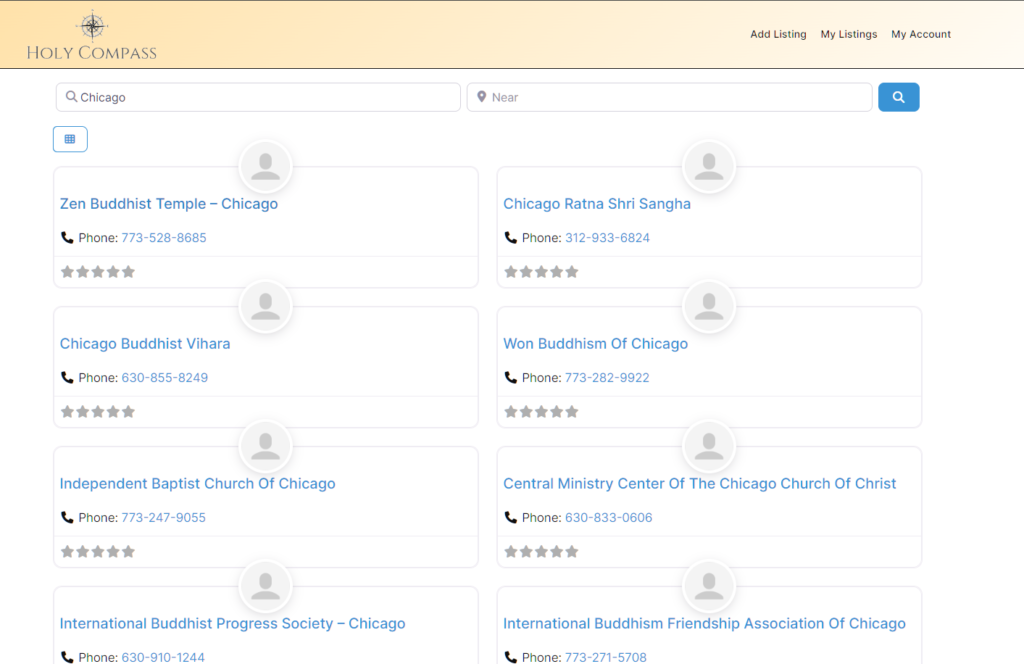
3. You will see the “Claim Listing”-Button in the bottom right (on Desktop). Click the button to claim the listing.
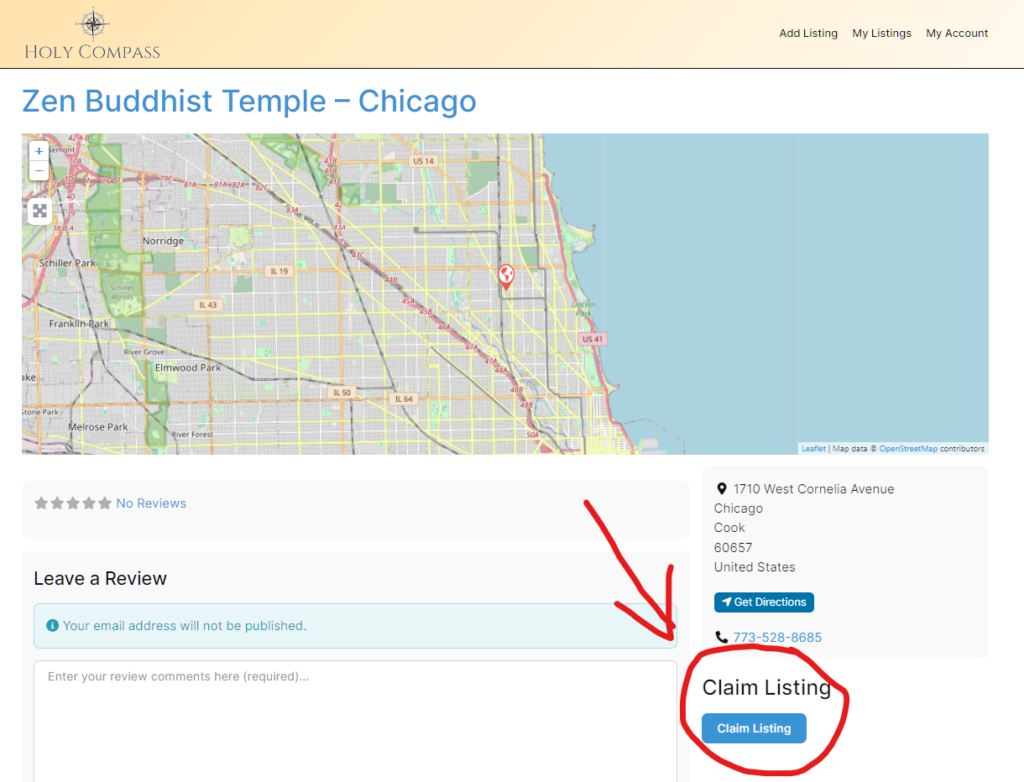
4. The “Claim Listing”-Button will lead to a registration form. There you have to fill out a Username, your Email, set a password and click on “Create Account”.


5. After you filled out your details, you will be logged in automatically and redirected to the listing where you clicked the “Claim Listing”-Button. There you will see a pop up with the “Claim Listing”-Form.

6. After filling out your details, click on send.

7. In order to claim the listing, you will have to complete the payment, you see the green link that says “Checkout”, you have to click on that.

8. The “Checkout” link will lead to the checkout page where you can purchase the listing.

9. After you completed the payment, you will see the order confirmation page. From there, click on the “My Listings”-Menu Button in the top menu.

10. On the “My Listings”-page you will see the listing you just purchased. Click on the blue link of the listing.

11. You will see the listing that you just purchased, but now it doesn’t show the “Claim Listing”-button anymore, instead it shows you an “Edit”-button, click on it to edit the listing.

12. Now you can edit the listing and fill out the missing information.

13. After you added your information, you can click on “Submit Listing” in the bottom of the page.

14. Your changes are live immediately, you can click on the blue “here” link to see your listing.

That’s it. If you have questions, please write us an email under: [email protected]
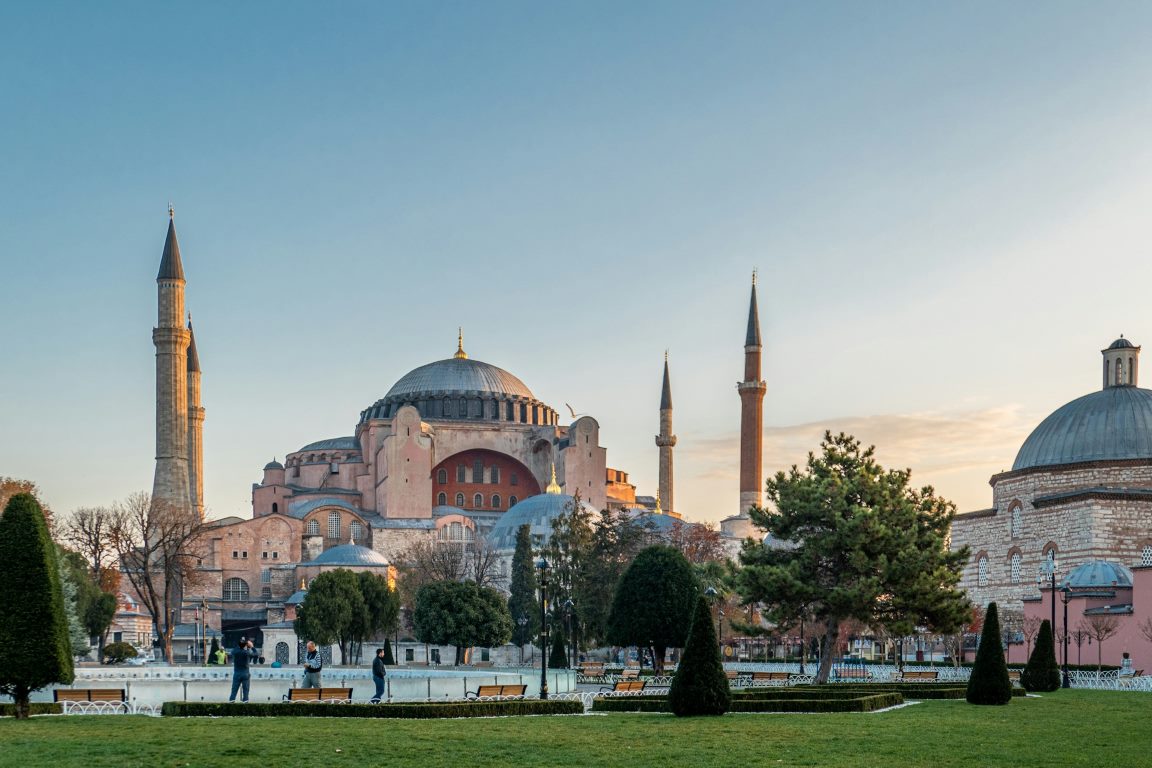
St. Anthony of Padua Church Istanbul
St. Anthony of Padua Church, Istanbul: A Spiritual Gem on Istiklal Avenue
St. Anthony of Padua Church, also known as the Basilica di Sant’Antonio di Padova, is a prominent Roman Catholic church located on the bustling Istiklal Avenue in the Beyoğlu district of Istanbul, Turkey. This magnificent church, with its rich history and stunning architecture, is a testament to the enduring presence of Christianity in a predominantly Muslim country.
Historical Background
The Church of St. Anthony of Padua was originally established in 1725 by the local Italian community in Istanbul. However, the current structure, which stands today, was built between 1906 and 1912. It was designed by the architect Giulio Mongeri in the Venetian Neo-Gothic style, reflecting the grandeur and elegance typical of that period. The church has served as a spiritual and cultural center for the Italian community in Istanbul and continues to be a significant place of worship for Catholics in the city. You can learn more about its history here.
The construction of the church was part of a broader effort to rebuild the Catholic community’s infrastructure after a fire destroyed the original church. The new building was funded by donations from the local Italian community and the Kingdom of Italy. The church was officially opened in 1912 and has since played a vital role in the religious and social life of the community.
Architectural Marvels
St. Anthony of Padua Church is renowned for its stunning architectural features. The exterior is characterized by its red-brick facade and intricate Gothic details, including pointed arches, ornate windows, and spires. The entrance is marked by a large rose window, which is a prominent feature of Gothic architecture. The red brick and white stone exterior, along with the detailed carvings, create a visually striking presence on Istiklal Avenue. Discover more about its architecture on Istanbul Tour Studio and the Turkish Travel Blog.
The interior of the church is equally impressive, with high vaulted ceilings, beautiful stained-glass windows, and elaborate altars. The central nave is flanked by two aisles, each adorned with religious artworks and statues. The church’s serene ambiance makes it a perfect place for reflection and prayer. The stained glass windows, imported from Italy, depict various scenes from the Bible and the lives of the saints, adding to the church’s spiritual atmosphere.
One of the unique aspects of the church’s design is its blend of traditional Gothic elements with local Turkish influences. This combination reflects the multicultural nature of Istanbul and the historical interactions between different cultures and religions in the city. The church’s bell tower, for example, incorporates elements of Ottoman architecture, creating a harmonious blend of Eastern and Western styles.
Cultural and Religious Significance
St. Anthony of Padua Church holds a significant place in the cultural and religious landscape of Istanbul. It is the largest Catholic church in the city and serves as the seat of the Apostolic Vicariate of Istanbul. The church hosts regular masses in various languages, catering to the diverse community of Catholics in Istanbul.
Throughout its history, the church has been a symbol of religious tolerance and coexistence in Istanbul. It has also played an important role in the lives of the local Catholic community, providing a place for worship, community gatherings, and cultural events. The church’s location on Istiklal Avenue, one of the most popular and vibrant streets in Istanbul, makes it a central and accessible place for both locals and tourists. For more on its cultural role, visit Istanbul Tourist Pass and Travel Curious.
Community Engagement and Social Services
Beyond its religious functions, St. Anthony of Padua Church is deeply involved in community engagement and social services. The church runs various programs aimed at supporting the local community, including food distribution, educational support, and healthcare services. These initiatives are an integral part of the church’s mission to serve those in need and promote social justice.
One of the church’s notable programs is its outreach to refugees and migrants in Istanbul. The church provides essential services and support to these vulnerable populations, helping them navigate the challenges of living in a new country. This work is a testament to the church’s commitment to compassion and service, reflecting the core values of the Christian faith.
Special Events and Services
St. Anthony of Padua Church hosts a variety of special events and services throughout the year. These include regular Sunday masses, special masses for holidays and religious festivals, and cultural events such as concerts and art exhibitions. The church is also a popular venue for weddings and other religious ceremonies.
Attending a service or event at St. Anthony of Padua Church provides a unique opportunity to experience the vibrant Catholic community in Istanbul and appreciate the church’s role in the cultural and religious life of the city. The church’s events are well-attended by both locals and tourists, highlighting its significance as a cultural landmark in Istanbul. Details about the church’s events can be found on A Trip to Istanbul and Cornucopia Guide.
Visitor Reviews and Experiences
St. Anthony of Padua Church is highly rated by visitors for its architectural beauty and tranquil ambiance. Many reviewers on platforms like TripAdvisor praise the church for its serene environment, which offers a stark contrast to the busy streets of Istanbul. One visitor described it as “a peaceful oasis in the heart of the city,” while another highlighted the “beautiful stained-glass windows and intricate details” as standout features of the church. These positive reviews reflect the church’s appeal to a wide range of visitors, from religious pilgrims to history and architecture enthusiasts. Read more reviews on TripAdvisor and Viator.
Visiting St. Anthony of Padua Church
Located on Istiklal Avenue, one of Istanbul’s most famous and vibrant streets, St. Anthony of Padua Church is easily accessible and a must-visit for anyone exploring the city. The church is open to visitors daily, and entry is free. It provides a peaceful sanctuary amid the bustling surroundings of Beyoğlu.
Visitors can attend mass, explore the church’s stunning interiors, and learn about its history and significance. The church’s serene atmosphere and beautiful architecture make it a popular spot for both locals and tourists. For more details on visiting the church, including service times and visitor tips, check How to Istanbul and City of Istanbul.
Conclusion
St. Anthony of Padua Church in Istanbul is more than just a place of worship; it is a historical and cultural landmark that embodies the spirit of religious tolerance and coexistence in the city. Its stunning architecture, rich history, and active role in the community make it a must-visit destination for anyone exploring Istanbul. Whether you are drawn by its spiritual significance, architectural beauty, or cultural impact, a visit to St. Anthony of Padua Church offers a profound and enriching experience.
For more information and updates, follow the church’s activities and events on relevant travel and informational websites.
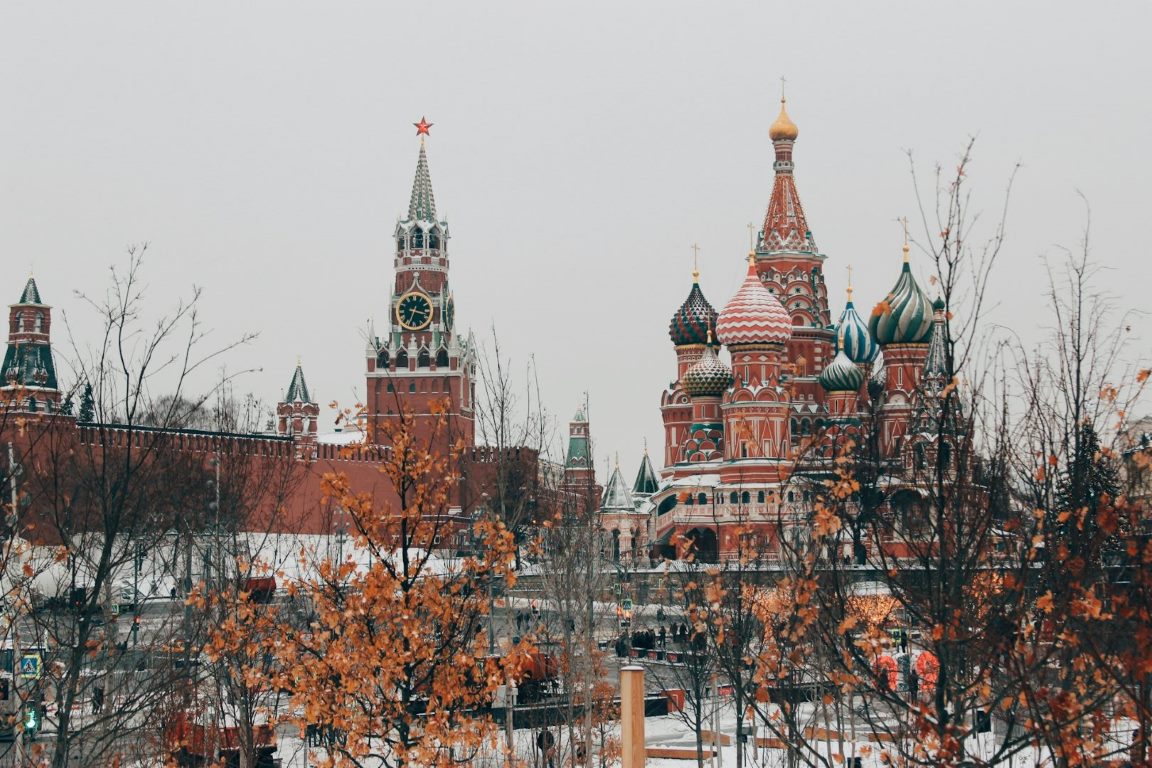
St Vladimir’s Church Moscow
St. Vladimir’s Church, Moscow: A Historical and Spiritual Landmark
St. Vladimir’s Church in Moscow, also known as the Church of St. Vladimir in the Old Gardens (Церковь Святого Владимира в Старых Садах), is a renowned Russian Orthodox church located in the Basmanny District of Moscow, near the Ivanovsky Convent and the confluence of the Yauza and Moskva rivers. This historic church, with its rich architectural and cultural heritage, stands as a testament to Russia’s deep-rooted Orthodox Christian traditions.
Historical Background
The origins of St. Vladimir’s Church date back to the early 15th century. Initially constructed as a palace church for Vasily I, it served as a place of worship for Russian royals until the ascension of the Romanov dynasty. The church’s significance grew over the centuries, reflecting the historical and spiritual evolution of Moscow.
The church we see today was erected in the 1660s on the foundations of the original structure. This deliberately archaizing building retains elements from an earlier church designed by Aloisio the New for Vasily III in 1514. One of the most distinctive features is the south porch, a remnant of Aloisio’s design. The church also boasts a unique belfry, which underwent significant modifications during the reign of Catherine the Great.
Architectural Marvels
St. Vladimir’s Church is renowned for its pentacupolar design, a hallmark of traditional Russian Orthodox architecture. The church’s exterior is characterized by its elegant white stone facade, which contrasts beautifully with the surrounding urban landscape. Perched on a small hill, the church offers a stunning view of this part of Moscow, making it a popular spot for both locals and tourists.
Inside, the church is filled with light, thanks to its large iconostasis and the cleverly designed recesses around the windows. These architectural features not only enhance the aesthetic appeal but also create a serene and contemplative atmosphere for worshippers. A small flower garden around the church adds to its charm, providing a peaceful retreat in the heart of the bustling city.
Challenges and Restoration
The history of St. Vladimir’s Church is not without its challenges. During the Soviet era, the church was closed and repurposed as a book storage facility. Its domes were dismantled, and a devastating fire in 1980 destroyed the remaining frescoes. However, the resilience of the Russian Orthodox Church and its parishioners led to a thorough restoration in the 1990s. Today, St. Vladimir’s Church stands as one of the most prosperous parishes in Moscow, having been lovingly repaired and refurnished to restore its former glory.
The restoration efforts have successfully preserved the church’s architectural integrity while also addressing the damage inflicted during the Soviet period. The bell tower, with its pyramidal spire, has been meticulously restored, although it still bears slight signs of the past predatory attitude towards religious structures. The interior is now bright and welcoming, with a large iconostasis and thoughtfully designed spaces for worship and contemplation.
Architectural and Artistic Highlights
The church’s interior is as remarkable as its exterior. The large iconostasis, a focal point within the church, is adorned with intricate icons and religious artifacts. This rich decoration reflects the deep spiritual and artistic traditions of the Russian Orthodox Church. The church’s interior spaces are designed to enhance the liturgical experience, creating a space that is both sacred and aesthetically pleasing.
The surrounding grounds, with their carefully maintained flower garden, add to the overall ambiance of the church. This natural setting provides a serene backdrop for contemplation and prayer, enhancing the spiritual experience for visitors and parishioners alike.
St. Vladimir: The Patron Saint
St. Vladimir’s Church is dedicated to the memory of St. Vladimir, also known as Vladimir the Great, who played a pivotal role in the Christianization of Kievan Rus’. Born a pagan, Vladimir’s life took a transformative turn when he decided to explore various faiths to determine the true religion. His envoys’ encounter with the divine liturgy in Constantinople led to his baptism and the subsequent Christianization of his realm.
St. Vladimir’s conversion marked a significant shift in the religious landscape of Eastern Europe. He destroyed pagan idols and replaced them with churches, fostering the spread of Orthodox Christianity. Today, he is remembered and venerated for his pivotal role in the establishment of the Russian Orthodox Church.
Modern-Day Significance
Today, St. Vladimir’s Church continues to be a vibrant center of worship and community life. The church holds regular services, including the Divine Liturgy, which attracts a large congregation. The church’s parish is active in various social and charitable activities, reflecting the enduring legacy of its patron saint.
The church also serves as a cultural and historical landmark, drawing visitors from around the world who come to admire its architectural beauty and learn about its rich history. Guided tours provide insights into the church’s past, its architectural features, and its role in the spiritual life of Moscow.
Visiting St. Vladimir’s Church
St. Vladimir’s Church is easily accessible and is located in the heart of Moscow, making it a must-visit for anyone interested in Russian history, architecture, or spirituality. Visitors are welcome to attend services, explore the church’s interior, and enjoy the peaceful garden that surrounds it.
The church’s proximity to other historic sites, such as the Ivanovsky Convent and the confluence of the Yauza and Moskva rivers, makes it an ideal starting point for exploring the rich cultural heritage of Moscow. Whether you are a devout Orthodox Christian or a curious traveler, a visit to St. Vladimir’s Church promises to be a memorable and enriching experience.
Other Churches Named St. Vladimir
While the focus of this article is on St. Vladimir’s Church in Moscow, it’s worth noting that there are other significant churches named after St. Vladimir in various parts of the world. For example, the Church of the Vladimir Icon of the Mother of God in St. Petersburg is one of the oldest churches in the city, featuring a unique combination of baroque and classical architectural styles. Another notable example is the Orthodox Church of St. Vladimir in Mariánské Lázně, which was built between 1900 and 1902 and features a richly decorated iconostasis.
In the United States, the St. Knyaz Vladimir Russian Orthodox Church in Miami, Florida, serves as a spiritual home for the Russian Orthodox community. Additionally, the St. Vladimir Memorial Church in New Jersey commemorates the 1000th anniversary of the Baptism of Rus’ by Prince Vladimir and offers a range of services and community activities.
Conclusion
St. Vladimir’s Church in Moscow stands as a testament to the enduring legacy of Russian Orthodox Christianity. Its rich history, stunning architecture, and spiritual significance make it a cherished landmark in the heart of Moscow. As it continues to thrive as a center of worship and community, St. Vladimir’s Church remains a beacon of faith and resilience, inspiring all who visit its sacred grounds.
For more information about the history and significance of St. Vladimir’s Church, visit the Wikipedia page. To read visitor reviews and experiences, check out the TripAdvisor page. To explore the broader context of Russian Orthodox churches, visit the St. Petersburg churches page, the Mariánské Lázně page, the Miami church page, and the New Jersey church page.
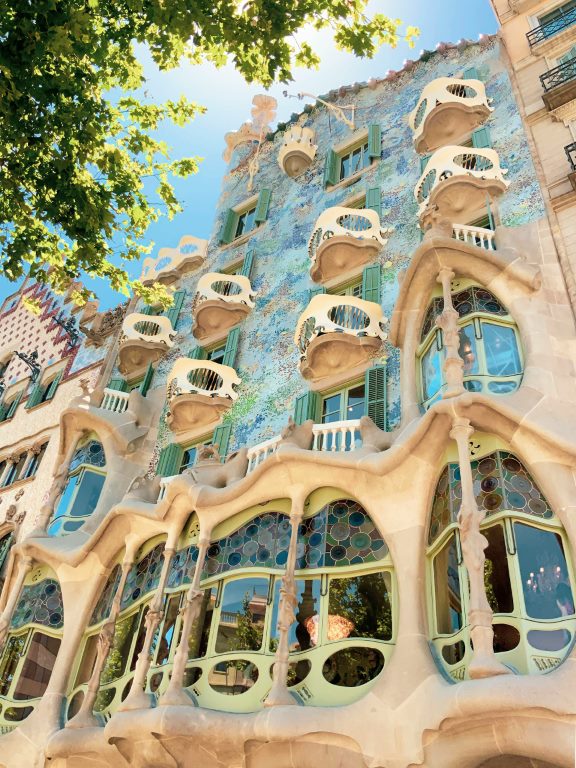
Cathedral of Barcelona
Cathedral of Barcelona: A Gothic Masterpiece
The Cathedral of Barcelona, also known as the Cathedral of the Holy Cross and Saint Eulalia, is one of the most iconic landmarks in Barcelona, Spain. Located in the heart of the Gothic Quarter, this stunning cathedral is a testament to the city’s rich religious and architectural heritage.
Historical Background
The construction of the Cathedral of Barcelona began in 1298 and was completed in the 15th century. The cathedral was built on the site of a former Romanesque church, which itself was erected on the foundations of a Visigothic chapel. The cathedral is dedicated to Eulalia of Barcelona, a young virgin who, according to Catholic tradition, suffered martyrdom during Roman times. Her remains are entombed in the cathedral’s crypt. For a detailed history, visit the Wikipedia page and the official site.
Architectural Marvels
The Cathedral of Barcelona is an exquisite example of Gothic architecture. Its facade, which was completed in the 19th century, features intricate carvings, statues of saints, and gargoyles. The interior is equally impressive, with soaring vaulted ceilings, beautiful stained-glass windows, and an elaborate altarpiece. One of the most striking features of the cathedral is its cloister, which is home to thirteen white geese, symbolizing the age of Saint Eulalia at the time of her martyrdom.
The cathedral’s bell tower offers panoramic views of the city, providing visitors with a unique perspective on Barcelona’s architectural landscape. The choir stalls, with their intricately carved wooden seats, and the crypt of Saint Eulalia are other highlights that showcase the cathedral’s artistic and historical significance. More about the architecture can be found on Barcelona Cathedral Tickets and Barcelona.de.
Cultural and Historical Significance
The Cathedral of Barcelona has played a central role in the religious and cultural life of the city for centuries. It has been the seat of the Archbishop of Barcelona since its completion and continues to host important religious ceremonies and events. The cathedral is also a popular tourist destination, attracting millions of visitors each year who come to admire its beauty and learn about its history.
The cathedral’s significance extends beyond its religious function. It is a symbol of Barcelona’s medieval heritage and a testament to the city’s architectural prowess. The cathedral has also been a witness to many historical events, including royal coronations and significant political gatherings. Learn more about its cultural significance on Barcelona Turisme and Spain.info.
Visitor Experience and Reviews
Visitors to the Cathedral of Barcelona are often struck by its grandeur and the serene atmosphere within its walls. The cathedral is a favorite spot for both tourists and locals, who come to explore its architectural marvels and reflect on its historical significance. Many visitors are particularly impressed by the cloister and the panoramic views from the bell tower.
On TripAdvisor, reviews frequently highlight the cathedral’s stunning architecture and its peaceful ambiance. One reviewer noted, “The Cathedral of Barcelona is a must-see. The architecture is breathtaking, and the history behind it is fascinating.” Another visitor commented, “The cloister and the view from the bell tower are highlights of the visit. It’s a beautiful and serene place.” Read more reviews on TripAdvisor.
Visiting the Cathedral of Barcelona
Located in the Gothic Quarter, the Cathedral of Barcelona is easily accessible by public transport. The cathedral is open to visitors daily, and guided tours are available to provide deeper insights into its history and architecture. The surrounding area is filled with charming streets, shops, and cafes, making it an ideal starting point for exploring Barcelona’s historic district.
Visiting the Cathedral of Barcelona offers a unique opportunity to explore one of the city’s most significant landmarks. Whether you are interested in its architectural beauty, historical significance, or cultural activities, the cathedral provides a rich and rewarding experience. For more information on visiting, check BCN Travel and Barcelona Bus Turistic.
Special Events and Services
The Cathedral of Barcelona hosts a variety of events throughout the year, including religious services, concerts, and cultural events. These events are an integral part of the cathedral’s mission to promote community engagement and cultural heritage. The cathedral’s festive events, especially during major religious holidays, attract numerous visitors and locals alike, creating a lively and spiritually enriching atmosphere.
Attending an event at the Cathedral of Barcelona offers a unique opportunity to experience the cathedral’s cultural and historical significance. Whether it’s a traditional religious ceremony or a classical music concert, these events provide a deeper connection to the cathedral and its community. More information about upcoming events can be found on Catedral BCN and Inside Barcelona Cathedral.
Conclusion
The Cathedral of Barcelona is more than just a place of worship; it is a cultural and historical treasure that embodies the spirit of Barcelona. Its stunning Gothic architecture, rich history, and active role in the community make it a must-visit destination for anyone exploring Barcelona. Whether you are drawn by its architectural beauty, historical significance, or cultural impact, a visit to the Cathedral of Barcelona offers a profound and enriching experience.
For more information and updates, follow the cathedral’s activities and events on relevant travel and informational websites.
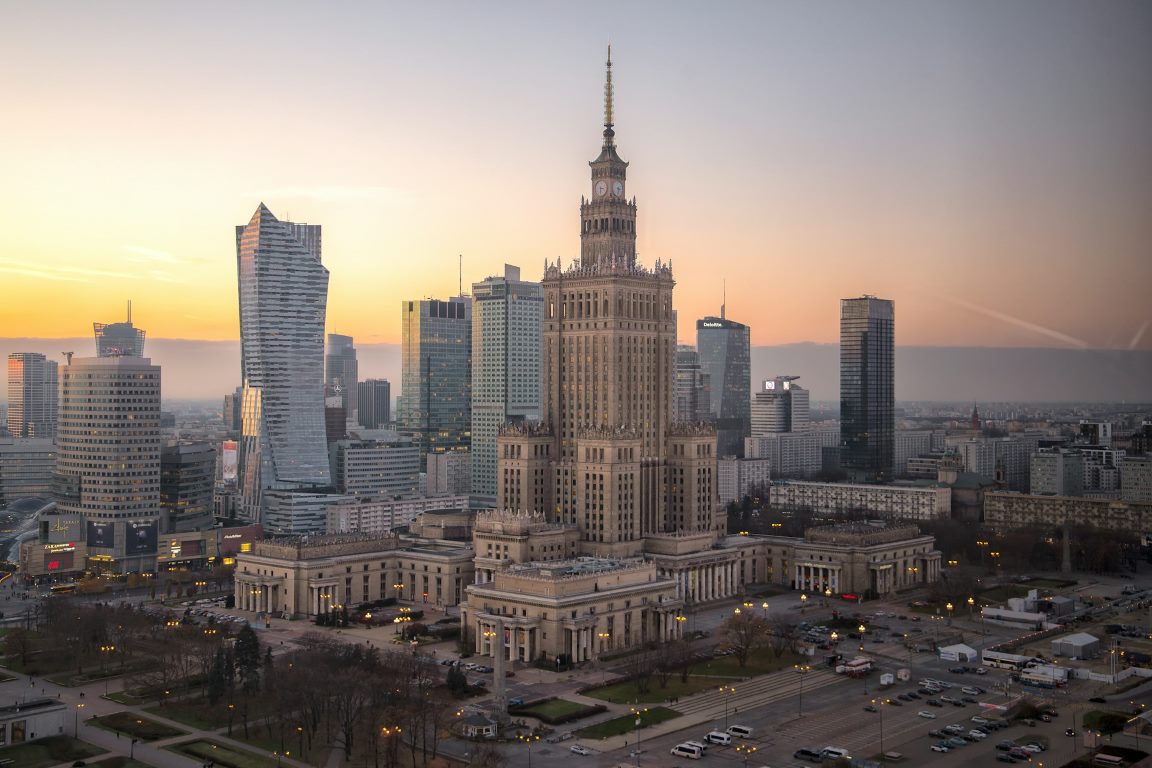
Holy Cross Church Warsaw
Holy Cross Church, Warsaw: A Symbol of Faith and Resilience
The Holy Cross Church, located in the heart of Warsaw, is one of the city’s most iconic religious sites. Known locally as Kościół Świętego Krzyża, this Baroque-style church stands as a testament to Warsaw’s enduring faith and resilience through its tumultuous history.
Historical Background
Holy Cross Church was originally built in the late 17th century. Its construction began in 1682 and was completed in 1696. However, the church underwent significant modifications and expansions over the centuries, particularly in the 18th century when it acquired its current Baroque form. The church has played a pivotal role in the religious and cultural life of Warsaw. Learn more about its history on Wikipedia.
During World War II, the church suffered severe damage, particularly during the Warsaw Uprising of 1944. The building was almost completely destroyed, with only the main facade and some structural elements remaining. Post-war reconstruction efforts restored the church to its former glory, making it a symbol of Warsaw’s resilience and determination to preserve its cultural heritage.
Architectural Marvels
The Holy Cross Church is an exquisite example of Baroque architecture, characterized by its grand facade, ornate interior, and intricate details. The church’s twin towers, crowned with Baroque domes, are a distinctive feature that dominates the surrounding skyline. The facade is adorned with statues and reliefs that depict various saints and biblical scenes.
Inside, the church boasts a richly decorated interior with numerous chapels, altars, and a stunning organ. The main altar is particularly noteworthy, featuring a beautiful depiction of the Crucifixion. The church is also home to several significant religious artworks and relics, making it a place of great spiritual and artistic importance. For more on its architecture, visit Go2Warsaw and Walking Warsaw.
Cultural and Historical Significance
Holy Cross Church is not only a place of worship but also a cultural and historical landmark in Warsaw. It has been the site of many significant events in Polish history, including national ceremonies and important religious celebrations. The church is also closely associated with several notable Polish figures, including the composer Frédéric Chopin, whose heart is interred in one of the church’s pillars.
The church’s role as a symbol of Polish resilience is particularly poignant given its destruction and subsequent reconstruction following World War II. Today, it stands as a testament to the city’s ability to rebuild and preserve its cultural heritage in the face of adversity. Learn more about its cultural significance on AB Poland and In Your Pocket.
Visitor Experience and Reviews
Visitors to the Holy Cross Church are often struck by its architectural beauty and serene atmosphere. The church is a popular destination for tourists and locals alike, who come to admire its grandeur and reflect on its historical significance. Many visitors also come to pay their respects at the pillar containing Chopin’s heart, a site of great emotional and cultural significance.
On TripAdvisor, reviews frequently highlight the church’s impressive architecture and its role as a symbol of Warsaw’s history. One reviewer noted, “The Holy Cross Church is a must-see in Warsaw. The architecture is stunning, and the history behind it is incredibly moving.” Another visitor commented, “It’s a beautiful church with a powerful story of resilience. The interior is breathtaking.” Read more reviews on TripAdvisor.
Visiting Holy Cross Church
Located on Krakowskie Przedmieście, one of Warsaw’s most famous streets, Holy Cross Church is easily accessible by public transport. The church is open to visitors daily, and guided tours are available to provide deeper insights into its history and architecture. The surrounding area is also home to several other notable landmarks, making it an ideal starting point for exploring Warsaw’s cultural and historical heritage.
Visiting Holy Cross Church offers a unique opportunity to explore one of Warsaw’s most significant religious and cultural sites. Whether you are interested in its architectural beauty, historical significance, or spiritual atmosphere, the church provides a rich and rewarding experience. For more information on visiting, check Navicup and Walking Warsaw.
Special Events and Services
Holy Cross Church hosts a variety of events throughout the year, including religious ceremonies, concerts, and cultural events. These events are an integral part of the church’s mission to promote community engagement and cultural heritage. The church’s festive events, especially during major religious holidays, attract numerous visitors and locals alike, creating a lively and spiritually enriching atmosphere.
Attending an event at Holy Cross Church offers a unique opportunity to experience the church’s cultural and historical significance. Whether it’s a traditional religious ceremony or a classical music concert, these events provide a deeper connection to the church and its community.
Conclusion
Holy Cross Church in Warsaw is more than just a place of worship; it is a cultural and historical treasure that embodies the spirit of Warsaw. Its stunning Baroque architecture, rich history, and active role in the community make it a must-visit destination for anyone exploring Warsaw. Whether you are drawn by its architectural beauty, historical significance, or cultural impact, a visit to Holy Cross Church offers a profound and enriching experience.
For more information and updates, follow the church’s activities and events on relevant travel and informational websites.
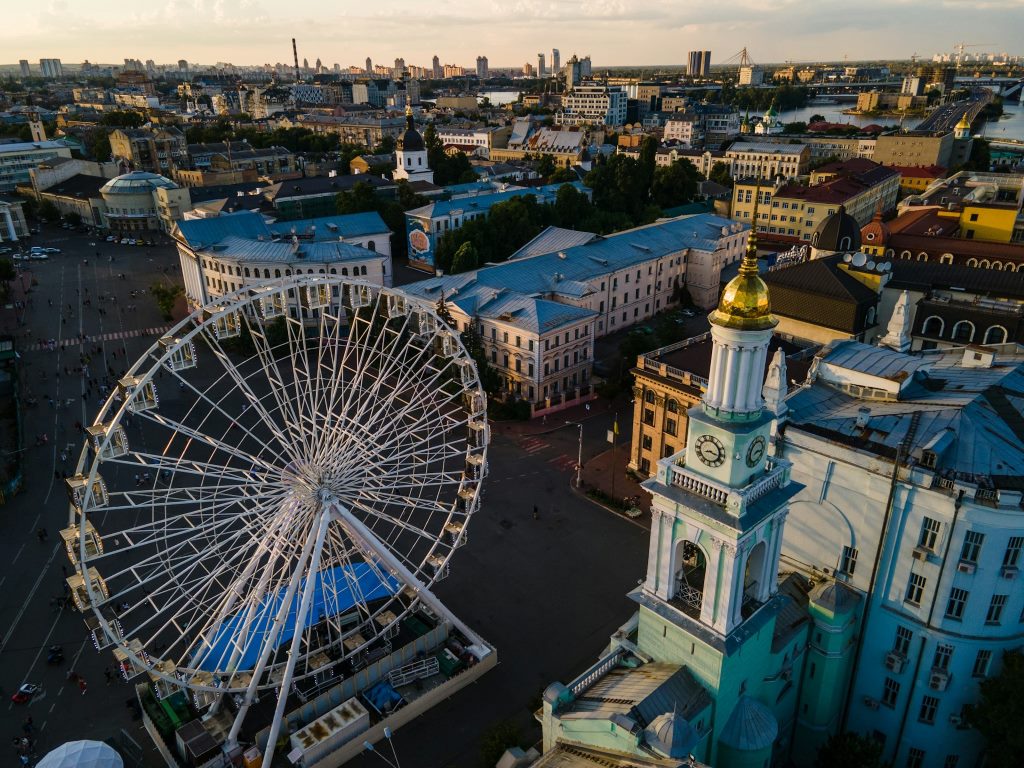
St. Andrew’s Church Kiev
St. Andrew’s Church, Kyiv: A Jewel of Baroque Architecture
St. Andrew’s Church, a magnificent example of Baroque architecture, stands proudly on the Andriyivskyy Descent in Kyiv, Ukraine. This iconic church is not only a religious site but also a symbol of Kyiv’s rich historical and cultural heritage.
Historical Background
St. Andrew’s Church was constructed between 1747 and 1754, based on the designs of the Italian architect Bartolomeo Rastrelli, who is also renowned for his work on the Winter Palace in St. Petersburg. The church was built on the site where St. Andrew, one of Jesus’s apostles, is said to have erected a cross, predicting that a great Christian city would one day arise. This legend adds to the spiritual significance of the site. More details about its history can be found on Wikipedia and the Encyclopedia of Ukraine.
Architectural Marvels
The church is a masterpiece of Baroque architecture, featuring a vibrant turquoise facade adorned with white and gold details. It is crowned by five domes, each topped with a gilded cross. The interior is equally stunning, with elaborate iconostasis and richly decorated altars. The church’s high position on the hill offers panoramic views of the city and the Dnipro River, making it a picturesque landmark.
The design of St. Andrew’s Church incorporates elements typical of Rastrelli’s style, including ornate decoration, dynamic forms, and a sense of grandeur and movement. The church’s exterior is decorated with columns, pilasters, and intricate stucco work, while the interior features beautiful frescoes and religious icons. For more on its architecture, visit Pragmatika Media and Religiana.
Cultural and Historical Significance
St. Andrew’s Church is not just an architectural gem but also a significant cultural and historical site. It has been a UNESCO World Heritage candidate and is part of the National Sanctuary “Sophia of Kyiv.” The church has played a crucial role in the religious and cultural life of Kyiv, hosting various ceremonies and events over the centuries. It remains an active place of worship and a popular tourist attraction.
The church has also been recognized for its historical significance during times of conflict. For instance, it recently hosted a moving ceremony in times of war, demonstrating its enduring role as a symbol of resilience and hope. This event highlighted the church’s importance as a cultural and spiritual beacon in Ukraine. Learn more about its cultural significance on the Europa Nostra and European Heritage Awards websites.
Visitor Experience and Reviews
St. Andrew’s Church is highly rated by visitors for its stunning architecture and historical ambiance. Many visitors are captivated by the church’s striking appearance and the breathtaking views from its hilltop location. The intricate details of the church’s design and its serene interior provide a peaceful retreat from the bustling city below.
On TripAdvisor, visitors frequently praise the church for its beauty and historical significance. One reviewer noted, “St. Andrew’s Church is a must-see in Kyiv. The architecture is incredible, and the views are spectacular.” Another visitor highlighted the church’s cultural importance, saying, “It’s not just a church; it’s a piece of Ukrainian history and a symbol of its resilience.” Read more reviews on TripAdvisor.
Visiting St. Andrew’s Church
Located on Andriyivskyy Descent, one of Kyiv’s most famous streets, St. Andrew’s Church is easily accessible by public transport. The church is open to visitors daily, and guided tours are available to provide deeper insights into its history and architecture. The area around the church is also known for its vibrant arts and crafts market, where visitors can buy traditional Ukrainian souvenirs.
Visiting St. Andrew’s Church offers a unique opportunity to explore one of Kyiv’s most significant landmarks and enjoy the stunning views of the city. The church’s location on the Andriyivskyy Descent makes it a perfect starting point for exploring other historical and cultural sites in Kyiv. For more information on visiting, check the National Sanctuary “Sophia of Kyiv” and Lonely Planet.
Special Events and Services
St. Andrew’s Church hosts a variety of events throughout the year, including religious ceremonies, concerts, and cultural events. These events are an integral part of the church’s mission to promote cultural heritage and community engagement. The church’s festive events, especially during major religious holidays, attract numerous visitors and locals alike, creating a lively and spiritually enriching atmosphere.
Attending an event at St. Andrew’s Church offers a unique opportunity to experience the church’s cultural and historical significance. Whether it’s a traditional religious ceremony or a classical music concert, these events provide a deeper connection to the church and its community.
Conclusion
St. Andrew’s Church in Kyiv is more than just a place of worship; it is a cultural and historical treasure that embodies the spirit of Kyiv. Its stunning Baroque architecture, rich history, and active role in the community make it a must-visit destination for anyone exploring Kyiv. Whether you are drawn by its architectural beauty, historical significance, or cultural impact, a visit to St. Andrew’s Church offers a profound and enriching experience.
For more information and updates, follow the church’s activities and events on relevant travel and informational websites.